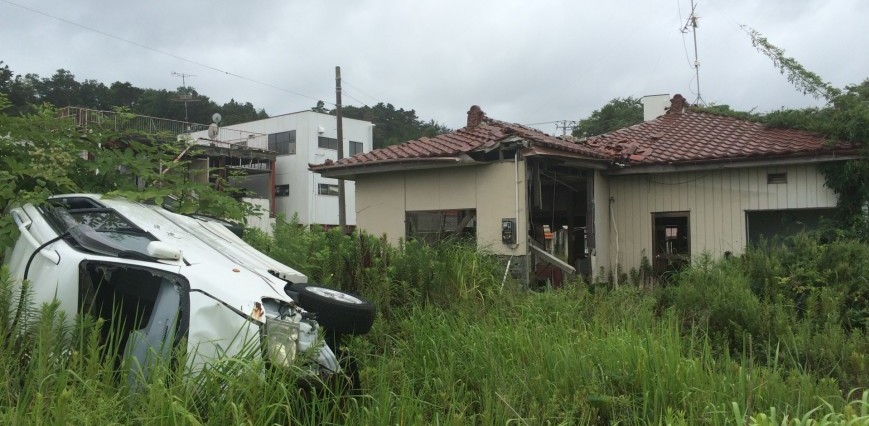
Students from Colorado State University and Fukushima University in Japan recently swapped places in a fledgling exchange program focused on radiation research.
But the experience for both groups encompassed much more than science.
“The valuable thing about this trip was the cultural angle,” said Justin Bell, a graduate student in the CSU Health Physics program.
Fukushima, where an earthquake and resulting tsunami caused a meltdown at the Daiichi Nuclear Power Plant in March 2011, has been the focus — and beneficiary — of CSU research for a couple of years.
Hear all about it
Health Physics graduate students will discuss their trip to Fukushima during a presentation at noon Friday, Oct. 2, in the Molecular and Radiological Biosciences Building, Room 312.
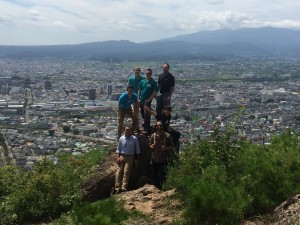
CSU faculty have conducted studies on the amounts of radiation found in soil, plants and animals there; the two universities jointly hired internationally renowned radiation expert and CSU alumnus Tom Hinton last spring; and last year the two schools launched the student exchange, in which five CSU students traveled to Fukushima in January 2014 and four Japanese students visited CSU the following September.
This time around, six CSU graduate students from the Department of Environmental and Radiological Health Sciences spent two weeks in Japan at the end of August, getting a firsthand look at how the incident affected the region’s environment and people. About a week later, five students from Fukushima University arrived for a 10-day visit to experience CSU and Fort Collins.
Beyond the classroom
In both cases, students took courses on radiation research, but the visits went beyond the classroom, providing a rewarding cultural experience as well.
Bell said he and his fellow students had studied the radiological effects of the Fukushima disaster in class, even analyzing soil samples in a radiation chemistry course.
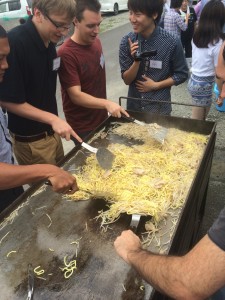
“But to actually go over and see the repercussions of it was really valuable,” he said. “What was most interesting was seeing the social and economic impacts firsthand.”
Studies have shown that no one has been killed or sickened by radiation from the Fukushima meltdown, according to a New York Times report earlier this month, but tsunami devastation and evacuations remain crippling – with ghost communities still off-limits to former residents.
Bell explained that the economy of the Fukushima state, or prefecture, has historically relied heavily on agriculture, and even though radiation testing has cleared many of its products for consumption, fear remains among some Japanese people about anything with a Fukushima label. Many Fukushima residents displaced by evacuations are still living in temporary housing more than four years later.
Brett Rosenberg, another graduate student who traveled to Fukushima, said there are still many misperceptions about the severity of the radiation there. While the nuclear meltdown threatened only a small part of the region, many people still assume the entire prefecture is dangerous. He noted that levels of background radiation in Colorado, because of elevation and geology, are higher than those in many areas of Fukushima.
“There are global misconceptions, but the picture of Fukushima should be painted positively,” he said.
Trip highlights
Trip highlights for the CSU students included staying with Japanese families, visiting hot springs, and touring an aquarium and middle school that were devastated by the disaster.
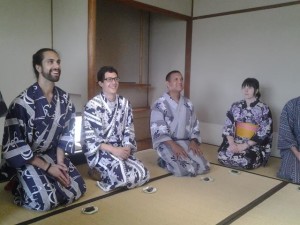
“That’s the purpose of the Fukushima Ambassadors Program,” said Thomas Johnson, associate professor of Environmental and Radiological Health Sciences. “It’s to spread the word, tell the true story of what’s happening over there, and increase our cultural understanding of the accident and the people.”
He emphasized the importance of experiencing the place in person.
“To actually see it is much different than taking a measurement in a lab,” Johnson said. “It’s no longer just about numbers; the students see how this impacts society. We can give them that experience thanks to our collaboration with Fukushima University.”
When the Fukushima students visited CSU Sept. 8-17, they also stayed in the homes of local families and visited local tourist attractions, from Rocky Mountain National Park to Elitch Gardens in Denver. They took a radiation course from native Japanese speaker and Assistant Professor Takamitsu Kato and met CSU President Tony Frank.
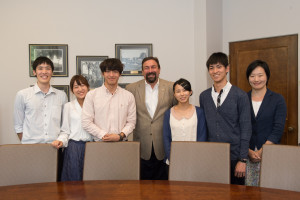
When they visited with the president, Fukushima chaperone He Min told Frank that she and the students were very impressed by the trip. Min, who is assistant director of the Fukushima University International Center, called it the best study abroad program she has ever experienced.
“We feel very blessed to have the opportunity to learn from CSU,” she said.
When Frank asked the group to describe the most surprising part of the visit, the students said hamburgers and other dishes were served in very large portions, and that the stars in the night sky were more beautiful than they expected.
“Together we can do more for students than we could do apart,” Johnson said of the partnership with Fukushima University.